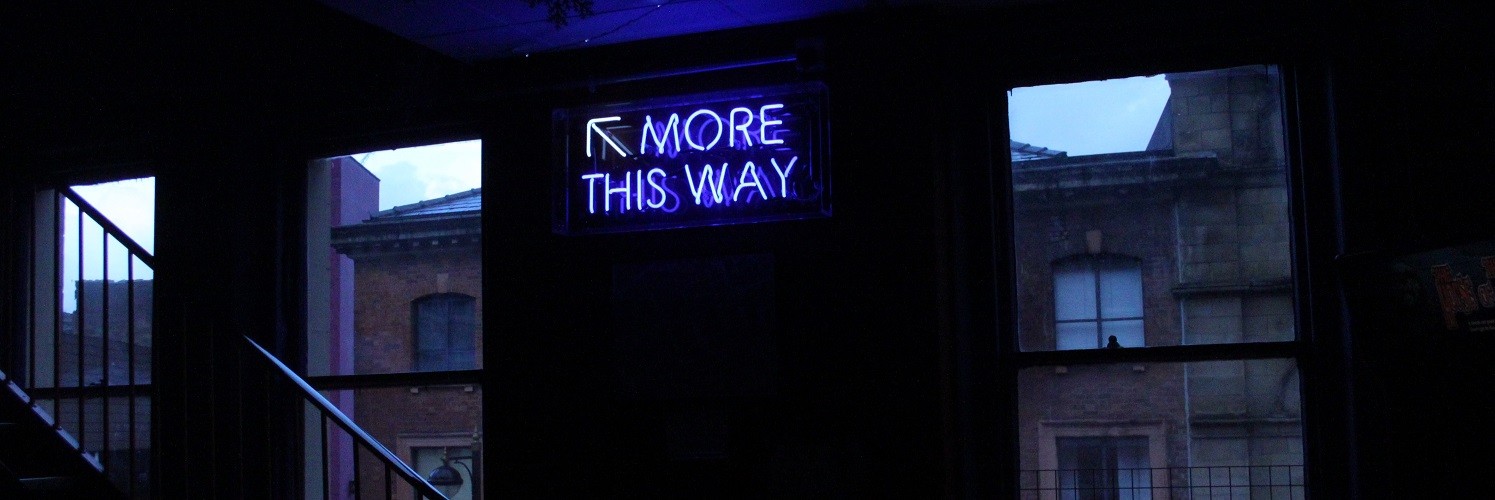
We’ve all seen the sign on the marquee of some local watering hold. “Coldest beer in town,” it proclaims. Marketing at its most basic.
But how do we know it’s really the coldest? There are other bars in town. Surely they have cold beer as well. Maybe even colder. NO! The sign says otherwise. For the coldest beer, this is the place. They probably have other things too. Burgers. Billiards. The occasional bar fight. But this bar is staking its reputation on one thing.
Coldest. Beer. In town. What more could anyone possibly need? For many brands, the answer is plenty. There’s been a push from a variety of brands with ads declaring, “We’re more than [blank].”
Look at recent marketing efforts from Coca-Cola, Domino’s Pizza, Quik Trip, and Bush’s Beans. For them, more isn’t less. More is more. And more is better.
But is it?
The Coca-Cola Company is more than Coke or Diet Coke or even, god forbid, Coke Zero. It is a Total Beverage Company for coconut water and sport drinks and such.
Domino’s Pizza is more than just pizza. It’s chicken, and pasta, and other assortments of cheese baked onto bread.
Quik Trip (a convenience store chain in the Midwest, for those unfamiliar) is more than just a gas station. It’s breakfast, and beverages, and hot dog toppings, and take-home pizza.
Bush’s Beans is more than just beans. It’s a lot of other kinds of beans.
And these are just few of the many brands making concerted marketing efforts to the push the “more than” positioning. Coca-Cola released a 3-minute anthem video about its broad beverage endeavors. Domino’s and Push’s run commercials punctuated with the “more than” mantra. Quik Trip says it right on its napkins! What’s behind the recent need to be something more?
Call it the Amazon factor. Once an online reservoir for books, Amazon expanded to more than books on its way to reinventing the landscape of retail and global domination. Buying a book on Amazon now? Don’t forget to pick up dog food. Might as well throw a few gardening tools in the cart. Oh, and a new pair of pants. And everything else under the Amazonian sun.
Amazon is the quintessential more than brand. These other companies don’t want to be pigeonholed as just one thing. They want a broader appeal. More possibilities mean more eyes mean more consumers mean more money. If someone eliminates Coke from buying consideration, The brand chimes in with, “But wait, we’ve got fancy water, too!” That opens up an entirely new audience, and a potential revenue stream outside the flow of sugary soda.
More isn’t always more, though. Look at brands like Chick-Fil-A, Starbucks, and Warby Parker. These brands are owning a concept and increasing specialization within their specific merchandise mix. Dark will be the day if Chick-Fil-A, the self-proclaimed inventor of the chicken sandwich, announces, “We’re more than chicken – here’s our new burger!”
These brands embrace less is more. And it works for them. New products are introduced around their core concepts: different chicken flavor additions, endless coffee options, better glasses frames. If they go with more, it all adheres to their core merchandise concept.
No one has done this quite as well as Tom’s. While never proclaiming, “We’re more than one- shoes,” the inventive philanthropic company expanded its one-for-one concept to include sunglasses. When someone buys sunglasses from Tom’s, the company donates a pair of eyeglasses to someone in need. That’s taking the core merchandise concept and expanding it in a logical way, while also expanding its selling opportunities.
Here’s the bottom line. Domino’s sells pizza. Quik Trip is a gas station. Bush’s sell beans. Coke sells, well, Coke. That perception isn’t going to change, no matter how much more they add. But that doesn’t mean it has to be a limitation. Positioning themselves as “more than [blank]” can engage new customers and expand selling potential. As long as they don’t get carried away and try to be something they’re not.
Make “more” make sense. Don’t just be more for more’s sake. Brands that just scream more more more might find themselves not around anymore.
Tags: Customer Experience, customers, marketing, Matt Fey
